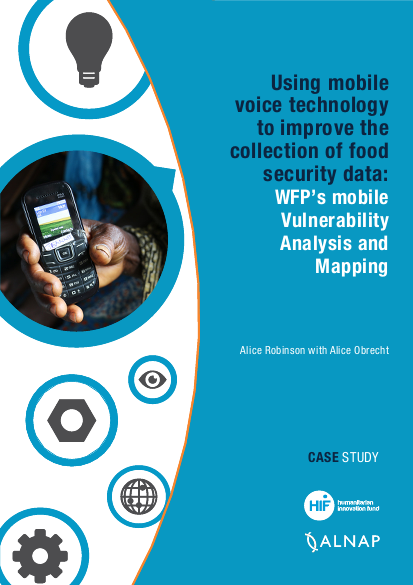
Reliable information is critical to understanding food security trends, assessing crises and informing decision-making. However, traditional methods for collecting this information – in particular food security data at household level – are often expensive, slow and cumbersome, which limits its effective use for decision-making.
This case study looks at WFP’s innovation into Mobile Vulnerability Analysis and Mapping (mVAM), a programme that integrates mobile technology, including SMS, Interactive Voice Response (IVR) and live calls, into WFP’s established food security monitoring systems.
ALNAP and ELRHA are looking at 14 different examples of humanitarian innovation funded by ELRHA’s Humanitarian Innovation Fund (HIF) grants. Each case study will explore the dynamics of successful innovation processes, culminating in a unique and in-depth study on innovation in humanitarian action.